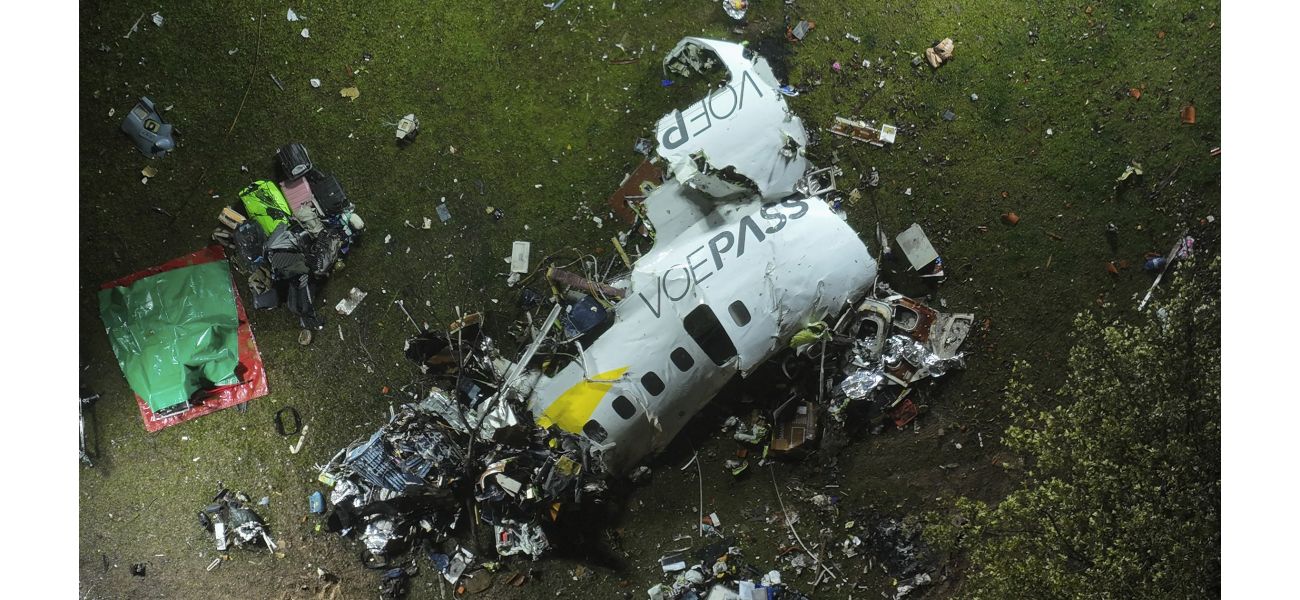Pilots of Brazil plane crash fought de-icing issues just before tragedy struck.
Moments before crashing, the co-pilot mentioned ice on the plane.
September 7th 2024.

A tragic accident occurred in Vinhedo, Sao Paulo, Brazil, where an airplane carrying 62 people crashed. The investigation into the crash has revealed that just minutes before the plane went down, the pilots reported a failure in the de-icing system. While the investigation team has not confirmed it as the main cause of the accident, their findings support the theory put forth by aviation experts that a build-up of ice on the wings may have compromised the plane's lift.
According to weather reports from the day of the crash, there were predictions of ice formation. Additionally, audio from the cockpit indicates that the pilots were aware of the ice but were unable to remove it. The Center for Research and Prevention of Aeronautical Accidents in Brazil stated that two minutes before the crash, the co-pilot can be heard saying "A lot of ice." The report also revealed that the de-icing system was turned on and off multiple times, as per the data recorder analysis.
However, there are still many unanswered questions, as stated by Carlos Henrique Baldin, head of the investigation division. He expressed that this accident should not have happened, as the plane was equipped with protection equipment and was flying in suitable conditions. The ATR-72 aircraft, operated by local carrier Voepass, took off from Cascavel and was headed to Sao Paulo's Guarulhos international airport.
The footage of the plane plummeting to the ground in a flat spin in Vinhedo, only 50 miles away from Sao Paulo, shocked people all over Brazil and the world. Henrique Hacklaender, the president of the national aviators' union, stated that based on the preliminary report, it is not possible to confirm that ice on the wings caused the accident. However, there are indications that ice formation may have been a significant contributing factor.
He also mentioned that the ATR 72's de-icing system is manually controlled by pilots, and the preliminary report shows that it was activated during the flight, indicating that the pilots attempted to use it. However, it is not clear if the system was actually employed. Three experts interviewed by Reuters shared their belief that icing may have played a role in the crash, but they also cautioned against drawing conclusions as accidents are often caused by multiple factors.
Anthony Brickhouse, a US aviation safety expert, stated that the preliminary report's findings align with the possibility of icing being a factor. However, he also pointed out that accidents are rarely caused by a single event. The officials also revealed that the plane's crew never declared an emergency before the crash, despite receiving loss of speed alerts. It is still unclear to them why a certified aircraft lost control and crashed.
The carrier, in a statement, confirmed that both the aircraft and pilots were properly certified. They also stated that all the necessary systems were operational on the ATR. The company will continue to cooperate with the investigation. Photos released by the Brazilian Air Force showed part of the black boxes, including the cockpit voice recorder and the flight data recorder.
This tragic accident is the deadliest since January 2023 when a Yeti Airlines plane in Nepal crashed, killing 72 people. The final report attributed the cause to pilot error. A similar incident occurred in 1994 when an American Eagle ATR-72 crashed, killing all 68 people on board. The US National Transportation Safety Board determined that the probable cause was ice build-up while the plane was in a holding pattern. Following this incident, the US Federal Aviation Administration issued operating procedures for ATRs and similar planes, advising pilots not to use the autopilot in icing conditions.
According to weather reports from the day of the crash, there were predictions of ice formation. Additionally, audio from the cockpit indicates that the pilots were aware of the ice but were unable to remove it. The Center for Research and Prevention of Aeronautical Accidents in Brazil stated that two minutes before the crash, the co-pilot can be heard saying "A lot of ice." The report also revealed that the de-icing system was turned on and off multiple times, as per the data recorder analysis.
However, there are still many unanswered questions, as stated by Carlos Henrique Baldin, head of the investigation division. He expressed that this accident should not have happened, as the plane was equipped with protection equipment and was flying in suitable conditions. The ATR-72 aircraft, operated by local carrier Voepass, took off from Cascavel and was headed to Sao Paulo's Guarulhos international airport.
The footage of the plane plummeting to the ground in a flat spin in Vinhedo, only 50 miles away from Sao Paulo, shocked people all over Brazil and the world. Henrique Hacklaender, the president of the national aviators' union, stated that based on the preliminary report, it is not possible to confirm that ice on the wings caused the accident. However, there are indications that ice formation may have been a significant contributing factor.
He also mentioned that the ATR 72's de-icing system is manually controlled by pilots, and the preliminary report shows that it was activated during the flight, indicating that the pilots attempted to use it. However, it is not clear if the system was actually employed. Three experts interviewed by Reuters shared their belief that icing may have played a role in the crash, but they also cautioned against drawing conclusions as accidents are often caused by multiple factors.
Anthony Brickhouse, a US aviation safety expert, stated that the preliminary report's findings align with the possibility of icing being a factor. However, he also pointed out that accidents are rarely caused by a single event. The officials also revealed that the plane's crew never declared an emergency before the crash, despite receiving loss of speed alerts. It is still unclear to them why a certified aircraft lost control and crashed.
The carrier, in a statement, confirmed that both the aircraft and pilots were properly certified. They also stated that all the necessary systems were operational on the ATR. The company will continue to cooperate with the investigation. Photos released by the Brazilian Air Force showed part of the black boxes, including the cockpit voice recorder and the flight data recorder.
This tragic accident is the deadliest since January 2023 when a Yeti Airlines plane in Nepal crashed, killing 72 people. The final report attributed the cause to pilot error. A similar incident occurred in 1994 when an American Eagle ATR-72 crashed, killing all 68 people on board. The US National Transportation Safety Board determined that the probable cause was ice build-up while the plane was in a holding pattern. Following this incident, the US Federal Aviation Administration issued operating procedures for ATRs and similar planes, advising pilots not to use the autopilot in icing conditions.
[This article has been trending online recently and has been generated with AI. Your feed is customized.]
[Generative AI is experimental.]
0
0
Submit Comment





